You know you’re happier when you’re creating, but how do you get creating when you’re stuck in a block?
Jump in the Creative Sandbox!
The Creative Sandbox is a metaphorical concept that I developed to get myself out of stuck and back into creative play. In a nutshell, it’s the mindspace of being a four-year-old.
See, as adults we’ve all learned to be very competent, but too often we’ve forgotten how to play!
And play is what’s required in order to liberate the deepest, richest, most authentic creativity inside of you.
And in order to play, we have to let go of perfectionism, let go of the need to create something awesome, and allow ourselves to make messes.
(Yes, I know, nobody likes to create crap, but as I like to say, we need the crap to fertilize the good stuff! (Click to tweet!))
The ten tips that follow, also known as my Creative Sandbox Manifesto, have gotten me, and thousands of others, out of resistance and stuck and back to creative joy.
Give them a try yourself. If you put these ten tips into practice, you’ll soon find your own creative life back in flow.
10 Tips to Bust a Creative Block: The Creative Sandbox Manifesto
 1. There is no “wrong.”
1. There is no “wrong.”
Which also means there is no “right.”
This is play, remember. The point is simply that you’re having fun.
2. Think process, not product.
In other words, It doesn’t matter if you like or hate the product; all that matters is that you’re having fun.
There’s time enough later for editing and crafting. Creative Sandbox time is all about letting your 4-year-old out, and 4-year-olds are much more interested in the experience of creating than in what they make.
If this concept is a tough one to wrap your head around, think sand castles, which will be washed away at the next high tide. Let yourself get your hands dirty (literally and/or metaphorically) and simply enjoy the work itself.
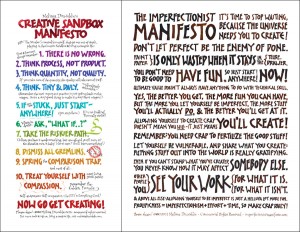 Want to keep these 10 tips handy? Download this FREE Poster!
Want to keep these 10 tips handy? Download this FREE Poster!
3. Think quantity, not quality.
If #2 above has you stressing, worried that you’ll never master your craft if you let yourself muck around like a 4-year-old, let me assure you, as long as you aren’t being sloppy, if you take care of the quantity, the quality will take care of itself. (Click to tweet!)
There’s a great story, shared in the book Art & Fear (affiliate link), of a ceramics teacher who divided his class into two groups at the start of the semester:
All those on the left side of the studio, he said, would be graded solely on the quantity of work they produced, all those on the right solely on its quality.
His procedure was simple: on the final day of class he would bring in his bathroom scales and weigh the work of the “quantity” group: fifty pound of pots rated an “A”, forty pounds a “B”, and so on. Those being graded on “quality”, however, needed to produce only one pot—albeit a perfect one—to get an “A”.
Well, came grading time and a curious fact emerged: the works of highest quality were all produced by the group being graded for quantity. It seems that while the “quantity” group was busily churning out piles of work—and learning from their mistakes—the “quality” group had sat theorizing about perfection, and in the end had little more to show for their efforts than grandiose theories and a pile of dead clay.
‘Nuff said.
4. Think tiny and daily.
One way to make sure you’re focused on quantity rather than quality is to keep your investment in any single piece of work really, really small.
After years of meticulously-made commissioned artworks, each taking anywhere from 30 to 250 hours to complete, I determined to dump the perfectionism and focus on cranking out as many finished pieces as possible. I wanted to be like the quantity group in the ceramics class, dammit, and in order to do that I needed to change my working style so that I wasn’t spending dozens or hundreds of hours on each piece.
I was inspired by an interview I did with daily painter Carol Marine, who found her flow (and a sustainable living, to boot!) when she switched from ginormous canvases to teeny, tiny ones — usually no more than 4″ to 6″ square. When finishing a piece doesn’t require a huge time investment, it’s a lot easier to let go of perfection and just “crank ’em out,” like the quantity group in the ceramics class.
If you’re a painter, try working small. If you’re a writer, commit to a small word-count, maybe 500 words, or even 3 minutes of writing.
Whatever your creative expression, I recommend keeping your Creative Sandbox time commitment really tiny, too, but consistent — daily, if at all possible.
When I started playing in the Creative Sandbox I committed to 15 minutes a day — that’s all. What I found was that 15 minutes was enough to get me into that blissful state of flow, where I forgot my ego for a time.
It also frequently led to a Creative Sandbox session that lasted for much longer than 15 minutes. The hardest part, after all, is starting — once you start, it’s usually pretty easy to just keep going.
Perhaps the most surprising gift of my tiny, daily practice, though, was that it made me feel much more immersed in my creative spirit than I ever would have anticipated. I like to say that a tiny, daily practice — even just a few minutes a day — keeps your toe in the Creative Stream. (Click to tweet this.)
5. Just start. Anywhere.
Many times in my life I’ve had serious creative blocks, including two dark periods that each lasted over a decade. Each time I’ve feared that I’d permanently lost the ability to be creative.
And each time I discovered that the secret to getting those creative taps to flow again is simply to do something. Anything.
Just as you can’t theorize your way to a perfect pot, you can’t intellectualize your way to creativity — it requires action. (Click to tweet!)
In 2010, when I determined to start making art for me again, I was burned out on my old, meticulous style of working and decided to try playing with canvas, which I’d never really used before. But I had no idea how to paint on canvas. I’d never used acrylic paints before.
I bought some 10″ x 10″ canvases at an art store, but it took months to work up the courage to open them up. Finally, with the intention to stay in the Creative Sandbox, firmly focused on process, I pulled out my paints and brushes and started making messes.
I didn’t much like the products of those first efforts (see #2 above) , but I had fun making those messes. And the best part: within 2 or 3 days, ideas were flowing and I couldn’t wait to get into my studio each morning to try them out!
Really, if you just start — anywhere — you’ll be surprised at how quickly your creative juices get going.
 Want to keep these 10 tips handy? Download this FREE Poster!
Want to keep these 10 tips handy? Download this FREE Poster!
6. When in doubt, ask “What if…?”
Experimentation is all about trying things, just to see what will happen. Creativity is not about perfection and technical mastery; it’s about finding solutions to problems, making discoveries and allowing them to pull you in a new direction.
When you express an idea in a way that pleases you, you may find yourself in a groove, which feels great.
…until it turns into a rut.
Ruts never feel like the Creative Sandbox. They feel more like a trap.
The quickest way out? Ask “What would happen if…?”
What if I drip the paint instead of brush it?
What if I turn the canvas upside down?
What if I sew on the canvas?
What if the character in my story goes left instead of right?
What if I tap my ukulele instead of strumming it?
These are the kinds of questions that can quickly get you joyfully sloshing metaphorical sand about once again.
7. Take the riskier path.
As a visual artist (and in fact as a performer, mentor and teacher, too), I prefer to work very improvisationally. I smoosh paint and ink around on paper or canvas just to see what it will do (see #6 above). Kinda like finger painting for adults.
I may do this for several layers, then later, after the paper is dry, I find interesting sections on the paper to tear or cut out and turn into a finished piece.
This is where my editor comes in. Even though I come to the Creative Sandbox focused on process, there’s always a back-and-forth between my 4-year-old and my editor.
It’s something of a contradiction: I have the intention of keeping the focus on process, but I confess I do also aim to end up with something that pleases me, something that feels well-crafted and “finished.”
This creates a bit of tension. There’s often a moment in the art-creation process when a piece doesn’t feel quite “done,” but there’s always a risk that the thing I’m contemplating adding may end up ruining rather than improving it.
My rule for myself here is to always take the route that may lead to “ruin,” even though I might very well lose something I like. (Another reason I adhere to #4 above.)
My thinking here is that I don’t want to get stuck in “preciousness,” stalled in the land of UFOs (Un-Finished Objects) because of fear I’d mess them up. That’s a sure path right back to stuckness — the opposite direction of where I’d like to be.
I’d rather crank out a bunch of “ruined disasters” than never finish anything out of fear I’ll mess up. (Click to tweet this.) That’s the Creative Sandbox path of growth and learning
Do the thing you fear. (If you’re a visual artist, go ahead and make liberal use of your digital camera or scanner if you really want to hang on to what you’ve got before you take that risky step!)
8. Dismiss all gremlins.
Gremlins are my term for those self-critical, self-doubting voices that we all have inside. The one that says “You’re not good enough,” the one that says, “Who do you think you are to try this?” and any variation thereof. Also known as the Inner Critic, the saboteur, monsters… they have a lot of names, these gremlins.
Tara Mohr likens this nasty internal voice to a guard patrolling the edge of your comfort zone. As long as you stay safely inside, the guard can go to sleep, but the second you get close to the edge, watch out — that’s when those nasty voices start yelling at you.
Learning to tame those gremlin voices is a life-long process. I’ve learned a lot of ninja gremlin-training tools, but the most important one of all is just to notice when it’s a gremlin talking, hear its voice and decide not to take direction from it.
The thing about true creativity is that it always happens in uncertainty, decidedly outside of your comfort zone. (Think about it: if there’s certainty around what you’re doing, that means it’s been done before, and if it’s been done before, it’s not truly creative, right?)
That means that every single time you engage in a creative act, your gremlins are bound to get loud and nasty.
Knowing this, I advise consciously setting up your Creative Sandbox space as a gremlin-free zone. You can alert any gremlins lurking about that they are not allowed inside, and if (when!) you notice any appearing, physically remove them.
You can have fun with this by literally acting out picking up said gremlin(s) and putting them outside and closing the door, or imagining drop-kicking them out the window (in a less peaceful mood), or sending them off somewhere. (I like to send mine off to get a pedicure. My gremlins get way more pedicures than I do!)
 Want to keep these 10 tips handy? Download this FREE Poster!
Want to keep these 10 tips handy? Download this FREE Poster!
9. Spring the Comparison Trap.
Another danger lurking around the Creative Sandbox is something I like to call the Comparison Trap.
I think I step in this trap more than anyone on the planet. (I’m a 4 on the Enneagram, and our core “vice” or “passion” [read: challenge] is envy, so it’s not really much of a surprise.)
If you’ve ever looked at someone else’s work and thought, “Man, I wish I could create something as awesome as that! My work will never be that good. I suck,” you know what it feels like to be caught in the Comparison Trap.
Stepping in the Comparison Trap always starts up those gremlin voices.
I had a revelation about this comparison thing many years ago, in a workshop on making decorated letters. I shared a table with a woman named Linda, whose work was gorgeous. Every time I’d look over at her half of the table, I’d think to myself, “Dang, her work is so cool and interesting… I wish my work was like hers!”
Everything I did felt inferior to everything she did, and I felt like a failure.
It was a rough weekend. I almost didn’t come back for the second day.
Thankfully, I did come back, though, and I learned a valuable lesson about half-way through the day, when all the students had spread our experiments out on the floor. Once again, I was admiring Linda’s work, wishing my work was as cool and interesting as hers, feeling badly about myself. My work just felt so boring in comparison.
Imagine my surprise when Linda turned to me and said, “Melissa, your work is so cool and interesting! I wish my work was like yours.”
Well, knock me over with a feather!
Something clicked for me right then. I realized a couple of important things:
First, I realized that my assessment of my work is really just one opinion, and if someone else has a more positive assessment — particularly someone whose aesthetic I really admire! — who am I to claim that my opinion is more valid than hers?
The other thing I realized is that someone else’s work will always feel more interesting and exciting to me than my own, because their work comes from their unconscious — a place that is completely unknown to me. My own unconscious, though not entirely known, is dramatically more familiar a space to me than anyone else’s, so of course my work is going to feel more familiar (and hence more “boring”) to me than theirs!
The truth is that each of us has a unique voice, a unique way of expressing ourselves, which is as valid as any other way. Using that unique way of yours to express what’s inside of you is your birthright, and your gift to the Universe. (And if any judgment starts to hone in on your Creative Sandbox time, don’t forget rule #2: Think process, not product.)
10. Treat yourself with compassion.
I like to say that the most important practice we can engage in is the practice of getting back ON the wagon. (Click to tweet!)
Or if you don’t like the metaphor of falling off the wagon, the most important practice we can engage in is the practice of starting again.
You are human. You will make commitments and life will get in the way and you will break them. It happens.
Falling off from a commitment is not a sign that you’re a failure and should give up. It’s an opportunity to remind yourself of how you feel when you’re doing what you love, and to compare that with how you feel when you’re not.
It’s a chance to notice, and to choose to start again.
You always get to start again.
In her (highly recommended) book, The Willpower Instinct, Kelly McGonigal cites research that shows that people who forgive themselves for their willpower failures are dramatically more likely to succeed in their willpower goals than those who beat themselves up. Despite what you might have learned otherwise, despite the conventional wisdom that “a good beating” might be what we need to get ourselves back in line, research proves that self-compassion, rather than self-flagellation, is the true route to success.
In other words, don’t beat yourself up — love yourself up! (Click to tweet.)
So there you have it! The 10 rules that make up my Creative Sandbox Manifesto, and that will get YOU back to creative flow and creative joy.
If these rules work for you, grab your very own copy of my manifesto poster! It’s a colorful, hand-lettered version of the 10 tips above (aka my Creative Sandbox Manifesto), combined with my Imperfectionist Manifesto, so you get two posters in one!
It’s ready for printing and posting on your wall where you can consult it daily (I sure do!) Just click the link to download:
Is there anything you’d add? What “rules” help you get into that state of play and flow?

PS — Pssst! Know someone who might benefit from seeing this today? Pass it on!

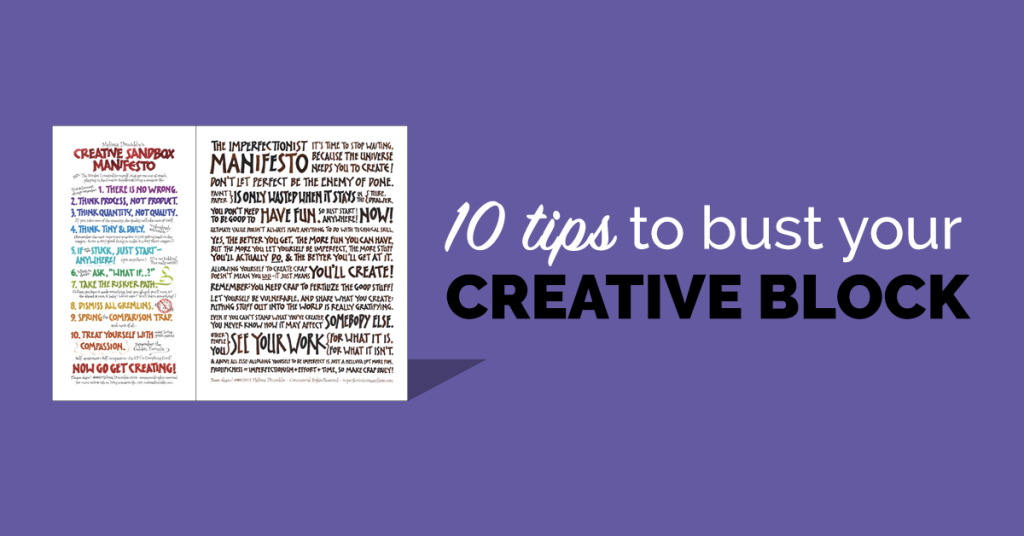
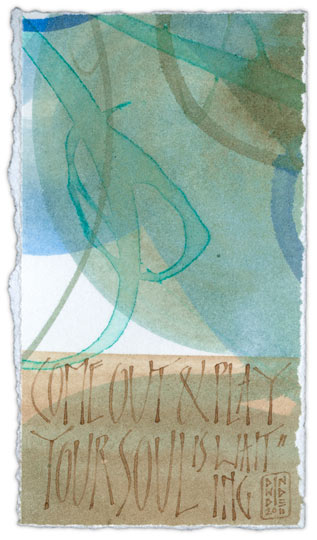
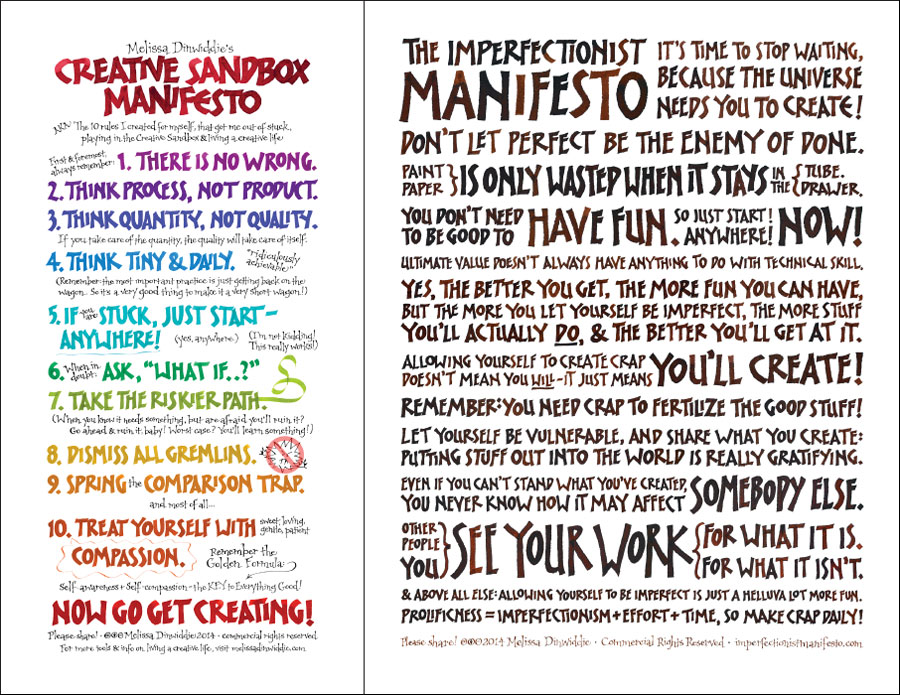
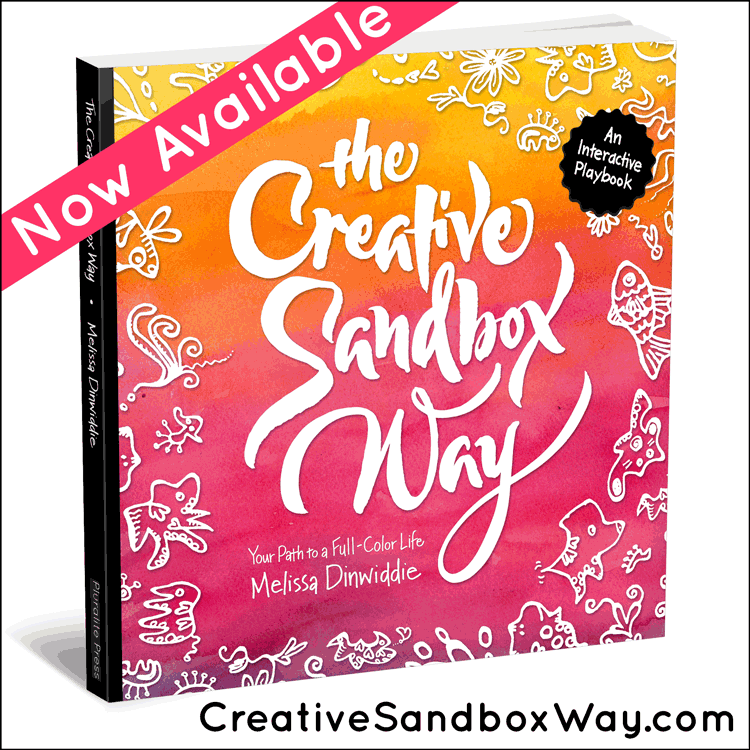
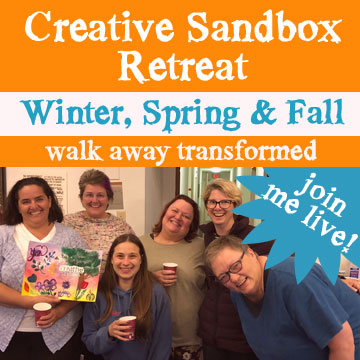
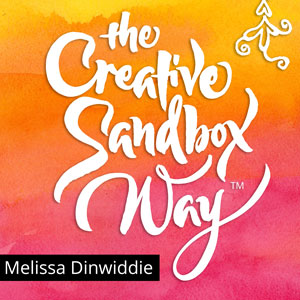

Leave a Reply